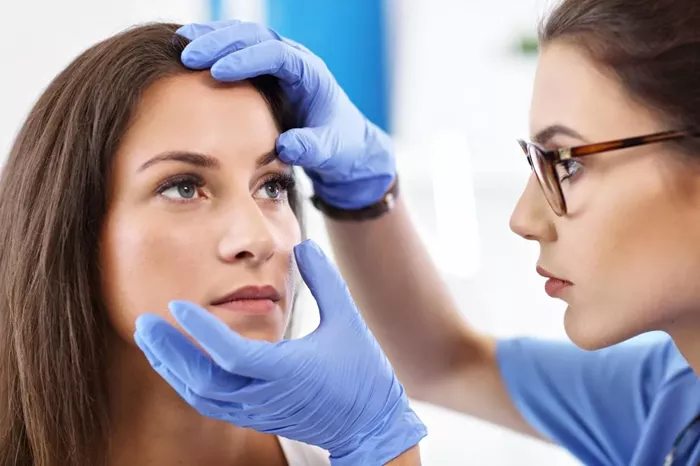Eye correction surgery has evolved significantly over the years, offering patients a range of options to improve their vision and reduce dependency on glasses or contact lenses. Among the most popular procedures are LASIK (Laser-Assisted in Situ Keratomileusis), PRK (Photorefractive Keratectomy), and SMILE (Small Incision Lenticule Extraction). Each of these techniques has its unique advantages, risks, and recovery processes. As we move into 2024, advancements in technology are shaping the future of these surgeries, making them safer, more effective, and tailored to individual needs.
The focus of this article is to explore the latest developments in eye correction surgery, particularly LASIK, which remains at the forefront of vision correction. We will delve into cutting-edge technologies that enhance surgical precision and patient outcomes. By understanding these innovations, patients can make informed decisions about their vision correction options.
Understanding LASIK Surgery
What is LASIK?
LASIK is a refractive eye surgery that corrects common vision problems such as myopia (nearsightedness), hyperopia (farsightedness), and astigmatism. The procedure involves reshaping the cornea—the clear front part of the eye—using a laser to improve how light rays are focused onto the retina.
How LASIK Works
Preparation: The surgeon begins by numbing the eye with anesthetic drops.
Flap Creation: A thin flap is created on the cornea using either a microkeratome or a femtosecond laser.
Corneal Reshaping: The laser is then used to remove precise amounts of corneal tissue, reshaping it to correct vision.
Flap Replacement: The corneal flap is repositioned, where it adheres naturally without stitches.
Benefits of LASIK
Quick Recovery: Most patients experience improved vision within 24 hours.
Minimal Discomfort: The procedure is relatively painless due to local anesthesia.
Long-lasting Results: Many patients achieve 20/25 vision or better after surgery.
Latest Advancements in LASIK Technology
Femtosecond Laser Technology
One of the most significant advancements in LASIK is the use of femtosecond lasers for flap creation. Unlike traditional microkeratomes, which use a blade, femtosecond lasers employ ultra-short pulses of light to create precise corneal flaps. This technology enhances safety and accuracy, reducing the risk of complications during surgery.
Wavefront Technology
Wavefront technology allows for a personalized approach to LASIK by mapping the unique imperfections in each patient’s eye. This detailed mapping creates a three-dimensional image that guides the laser during surgery, resulting in better visual outcomes and fewer side effects.
Topography-Guided LASIK
Topography-guided LASIK is another innovative technique that utilizes advanced imaging systems to analyze the cornea’s surface shape. This method provides even greater customization for patients with irregular corneas or those who have previously undergone refractive surgery.
Artificial Intelligence Integration
The integration of artificial intelligence (AI) into LASIK procedures enhances surgical planning and outcome predictions. AI algorithms analyze extensive patient data to assist surgeons in making informed decisions about treatment options and recovery plans. This technology aims to improve predictability and reliability in surgical results.
Presbyopia Correction
Traditionally, LASIK has focused on correcting nearsightedness, farsightedness, and astigmatism. However, new technologies are addressing presbyopia—a condition that affects near vision as people age. Multifocal LASIK procedures and accommodating intraocular lenses are being developed to help individuals see clearly at various distances without relying on reading glasses.
Corneal Cross-Linking
Corneal cross-linking is an emerging complementary technique that strengthens the cornea by promoting collagen cross-linking. This procedure reduces the risk of complications such as ectasia after LASIK surgery. Combining LASIK with corneal cross-linking may enhance long-term stability and safety for patients.
Alternative Vision Correction Procedures
While LASIK remains a leading choice for vision correction, other procedures offer viable alternatives depending on individual needs.
Photorefractive Keratectomy (PRK)
PRK is similar to LASIK but involves removing the outer layer of the cornea before reshaping it with a laser. This technique may be suitable for patients with thin or irregular corneas. Although PRK has a longer recovery time compared to LASIK, it can achieve comparable visual correction results.
Small Incision Lenticule Extraction (SMILE)
SMILE is a newer procedure that uses femtosecond lasers to create a lenticule—a small disc of tissue—within the cornea. The lenticule is then removed through a small incision without creating a flap or performing surface ablation. This minimally invasive approach may lead to quicker recovery times and less discomfort than traditional methods.
Considerations Before Undergoing Eye Correction Surgery
Before deciding on eye correction surgery, patients should consider several factors:
Eye Health: A comprehensive eye examination is essential to determine candidacy for surgery.
Age: Patients should be at least 18 years old for LASIK; younger individuals may not have stable vision.
Vision Stability: Candidates should have stable vision prescriptions for at least one year before surgery.
Lifestyle Factors: Active lifestyles may influence the choice of procedure; some options may be better suited for athletes or those engaged in contact sports.
Conclusion
The landscape of eye correction surgery continues to evolve with technological advancements that promise improved safety, precision, and effectiveness in procedures like LASIK. As we enter 2024, innovations such as femtosecond lasers, wavefront technology, AI integration, and new approaches for presbyopia are setting new standards in patient care.
Individuals considering eye correction surgery should consult with qualified ophthalmologists who can provide personalized recommendations based on their unique needs and circumstances. With ongoing research and development in this field, patients can look forward to even greater possibilities for achieving clear vision without dependence on glasses or contact lenses.
In summary, understanding these advancements empowers patients to make informed choices about their eye health and enhances their quality of life through improved vision correction options.
Related topic:
How to Treat Swollen Eyelid Naturally?
How do you fix droopy eyelids without surgery?


